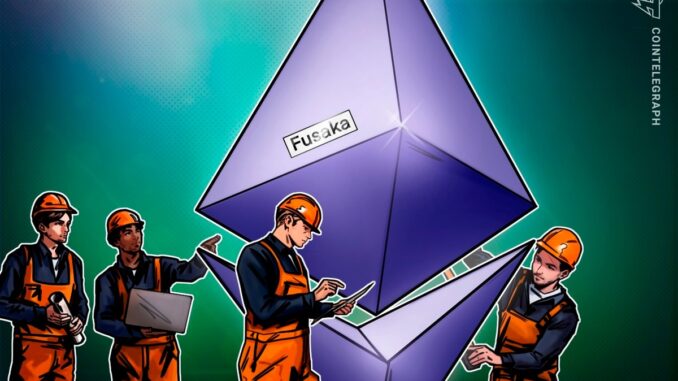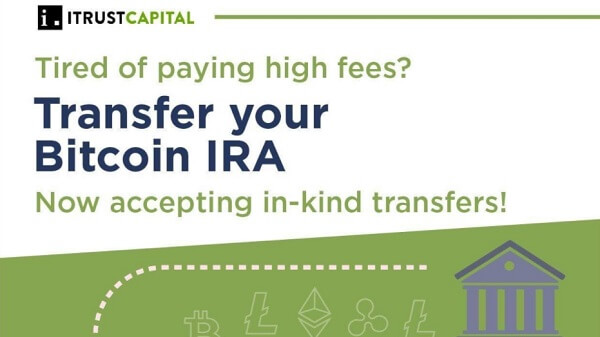
Ethereum’s Fusaka hard fork is expected to take place in the third or fourth quarter of this year, according to an Ethereum Foundation official.
In an April 28 X post, Ethereum Foundation co-executive director Tomasz Kajetan Stańczak said that the organization is aiming to deploy the Fusaka Ethereum network upgrade in Q3 or Q4 2025. Still, the exact rollout schedule has not been decided yet.
The comments come amid controversies over the upcoming implementation of the EVM object format (EOF) upgrade for the Ethereum Virtual Machine (EVM). As Stańczak pointed out, EOF is expected to be a part of the Fusaka network upgrade.
The EVM is the software that runs Ethereum smart contracts. EOF would implement a series of protocol changes, known as Ethereum improvement proposals (EIPs), with profound implications for how it operates. EOF introduces an extensible and versioned container format for the smart contract bytecode that is verified once at deployment, separating code and data for efficiency gains.
Related: Researcher proposes scaling Ethereum gas limit by 100x over 4 years
Wrap, stamp once, send
Bytecode is a low-level, compact set of instructions. Solidity smart contracts must be compiled into bytecode before the EVM can execute them.
EOF defines a container module for smart contract bytecode, replacing today’s free-form bytecode blobs with a better-defined structure. These objects would be composed of:
A header starting with the 0xEF00 hexadecimal value, followed by a one-byte version number to ensure upgradability.
A section table, providing metadata about the contents of the container. Each entry comprises one byte setting for the kind of entry and two bytes for the entry’s size.
Sections with the actual content, with at least one code section and any necessary data sections — more types of sections could be added through future EIPs.
This structure streamlines EVM operation, allowing for higher efficiency and lower processing overhead. This upgrade would result in a cleaner developer environment and easier-to-understand deployed smart contracts.
Don’t JUMP, RJUMP instead!
EIP-4200, one of the EOF EIPs, provides an alternative to the JUMP and JUMPI instructions, which allow the program to move execution to any arbitrary byte offset. This kind of execution chain leads to hard-to-spot bugs (the JUMP value being wrong in some instances may not be easy to predict) and makes it easy to hide malware in data blobs and move the execution pointer there.
This practice is known as dynamic jump, and EIP-4750 (under review) proposes disallowing dynamic JUMP/JUMPI inside EOF smart contracts, rejecting them entirely during a later phase of EOF deployment. In its current form, this EIP replaces them with call function (CALLF) and return from function (RETF) function calls. Those new instructions would ensure that destinations are hardcoded into the bytecode, but legacy pre-EOF smart contracts would be unaffected.
Developers who opt to use JUMP or JUMPI after the upgrade will have their bytecode go through deploy-time validation, which ensures that they can never jump into data or the middle of another instruction. This verification would take place via EIP-3670’s code-validation rules, plus the jump table (EIP-3690), so every destination is checked.
As an alternative to those functions, EOF implements RJUMP and RJUMPI instead, which require the destination to be hardcoded in the bytecode. Still, not everyone is on board with EOF implementation.
Related: Ethereum community members propose new fee structure for the app layer
EOF has its haters
EOF is the implementation of 12 EIPs with profound implications for how smart contract developers work. Its supporters argue that it is efficient, more elegant, and allows for easier upgrades down the line.
Still, its detractors argue that it is over-engineered and introduces further complexity into an already complex system such as Ethereum. Ethereum developer Pascal Caversaccio lamented in a March 13 Ethereum Magicians post that “EOF is extremely complex,” as it adds two new semantics and removes and adds over a dozen opcodes. Also, he argued that it is not necessary.
He said all the benefits could be introduced in “more piecemeal, less invasive updates.” He added that the legacy EVM would also need to be maintained, “probably indefinitely.”
Caversaccio also explained that EOF would require a tooling upgrade, which risks introducing new vulnerabilities due to its large attack surface. Also, he said, “EVM contracts get much more complicated due to headers,” while currently empty contracts weigh just 15 bytes. Another developer raised a separate point in the thread:
“Perhaps as a meta point, there seems to be disagreement about whether major EVM changes are desirable in general. A stable VM, on which people can invest in building up excellent tooling and apps with confidence, is much more valuable.“
Caversaccio appears to be in good company in his opposition to EOF. A dedicated poll on the Ethereum polling platform ETHPulse shows that 39 voters holding a total of nearly 17,745 Ether (ETH) are opposed to the upgrade. Only seven holders of under 300 ETH voted in favor.
Magazine: Ethereum is destroying the competition in the $16.1T TradFi tokenization race





 Bitcoin
Bitcoin  Ethereum
Ethereum  Tether
Tether  XRP
XRP  Solana
Solana  USDC
USDC  Dogecoin
Dogecoin  TRON
TRON  Cardano
Cardano
Be the first to comment